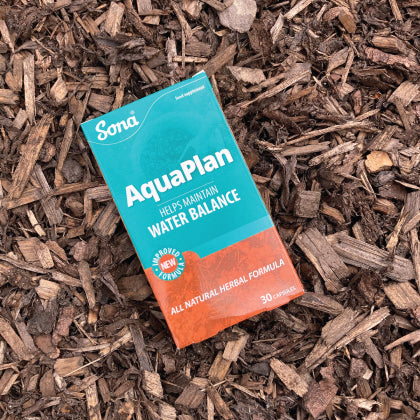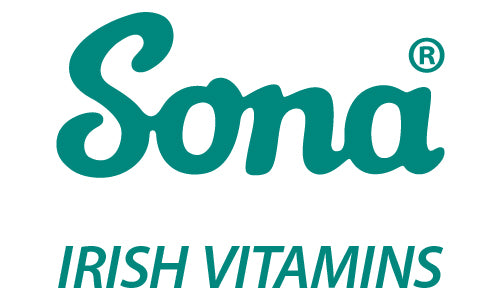
Water retention refers to the buildup of fluid within the body, or to be more specific, within the circulatory system or within the tissues and cavities. The buildup of excess fluid can cause the body to swell up, particularly the feet, ankles, legs, and hands.
Water retention can occur because of many factors, however most of which are not serious. This can include:
- Pregnancy:As a pregnant woman’s womb grows, more pressure can be put on the circulation to the lower part of her body. As a result, her blood does not flow as easily as it did prior to pregnancy, which can cause fluid to build up in the lower limbs.
- Before menstruation:Water retention prior to menstruation is caused by the fluctuations of hormones, particularly progesterone. Progesterone stimulates the hormone aldosterone, which causes the kidneys to retain water and salt.
- Inactivity:Extended periods of inactivity can also cause water retention within the body. This is due to bodily tissue holding onto water for too long. Not only do people who are inactive experience this type of water retention, but also those who may be bedridden, or those sitting through long airplane flights.
Below are some strategies which have shown to reduce water retention.
- Reduce your salt intake:The sodium in salt binds to water molecules in the body in order to maintain the balance of fluid both inside and outside of cells. However, if you consume too much salt the body may hold onto more water than is required.
- Increase your water intake:Increasing your water intake can flush out excess sodium within the body, reducing the over occurrence of sodium water binds.
- Reduce intake of simple carbohydrates:Simple carbohydrates include sugars and refined carbohydrates (grains that has the fibrous and nutritious parts removed). Simple carbohydrates can cause rapid spikes in blood sugar and insulin levels. High insulin levels can cause the body to hold onto more sodium by increasing the reabsorption of sodium in the kidneys, resulting in more fluid circulating the body.
- Increase your potassium intake:Potassium has the ability to reduce water retention due to its role in decreasing sodium levels within the body, and also by encouraging urine production.
- Increase your magnesium intake:Studies suggest that increasing your magnesium intake can also reduce water retention. Magnesium’s ability to reduce water retention has been particularly evident in women with premenstrual symptoms (PMS).
- Increase your vitamin B6 intake: Vitamin B6 has also shown an ability to reduce water retention. Like magnesium, these effects have been particularly effective in women with PMS.
- Try taking dandelion: Dandelion is a natural diuretic. Diuretics help rid the body of sodium and water; thus, they encourage urine production, ultimately helping to reduce water retention. Sona AquaPlan is a food supplement containing various herbs including dandelion, to help with periodic water retention. Sona AquaPlan also contains celery and burdock, two other natural diuretics that help relieve water retention.
- Increase your activity: Moving your body can help reduce fluid-build up in some parts of the body, particularly the lower limbs.
It is important to note that sudden or severe water retention can sometimes be a symptom of a severe medical condition such as kidney disease or heart failure. If you are experiencing sudden or severe water retention, visit your health practitioner immediately.
References
- D'Elia, L., Barba, G., Cappuccio, F. P., & Strazzullo, P. (2011). Potassium intake, stroke, and cardiovascular disease a meta-analysis of prospective studies. Journal of the American College of Cardiology, 57(10), 1210–1219.https://doi.org/10.1016/j.jacc.2010.09.070.
- Ebrahimi, E., Khayati Motlagh, S., Nemati, S., & Tavakoli, Z. (2012). Effects of magnesium and vitamin b6 on the severity of premenstrual syndrome symptoms. Journal of caring sciences, 1(4), 183–189.https://doi.org/10.5681/jcs.2012.026.
- Horita, S., Seki, G., Yamada, H., Suzuki, M., Koike, K., & Fujita, T. (2011). Insulin resistance, obesity, hypertension, and renal sodium transport. International journal of hypertension, 2011, 391762.https://doi.org/10.4061/2011/391762.
- Kojima, S., Inoue, I., Hirata, Y., Saito, F., Yoshida, K., Abe, H., Deguchi, F., Kawano, Y., Kimura, G., & Yoshimi, H. (1987). Effects of changes in dietary sodium intake and saline infusion on plasma atrial natriuretic peptide in hypertensive patients. Clinical and experimental hypertension. Part A, Theory and practice, 9(7), 1243–1258.https://doi.org/10.3109/10641968709160047.
- Negoianu, D., & Goldfarb, S. (2008). Just add water. Journal of the American Society of Nephrology : JASN, 19(6), 1041–1043.https://doi.org/10.1681/ASN.2008030274.
- Schütz, K., Carle, R., & Schieber, A. (2006). Taraxacum--a review on its phytochemical and pharmacological profile. Journal of ethnopharmacology, 107(3), 313–323.https://doi.org/10.1016/j.jep.2006.07.021.
- Walker, A. F., De Souza, M. C., Vickers, M. F., Abeyasekera, S., Collins, M. L., & Trinca, L. A. (1998). Magnesium supplementation alleviates premenstrual symptoms of fluid retention. Journal of women's health, 7(9), 1157–1165.https://doi.org/10.1089/jwh.1998.7.1157.
